Papers by Marie Christine Duggan
Dollars & Sense, 2024
Abusing the workforce leads to decline in quality of planes, not just disgruntled people at the f... more Abusing the workforce leads to decline in quality of planes, not just disgruntled people at the factory. Too much focus on finance takes away the focus on manufacturing at Boeing. There is a link to this article above. Link.
Journal of Historical Political Economy, 2022
We explore the long-run impact of the Spanish missions on Native American outcomes in the early t... more We explore the long-run impact of the Spanish missions on Native American outcomes in the early twentieth century. Native communities who interacted with Spanish missionaries developed into enclaves which blended Catholicism with native culture. Some survived assaults on their property rights by Mexico and the United States to persist as reservations into the twentieth century. We found that having extensive contact with missions increased the percentage of Native Americans Catholic, decreased crime rates, and increased income from agriculture and overall earnings from wages. Surprisingly, we found no impact on education.

Eastern Economic Journal, Jun 1, 2014
work-sharing arrangements, which have shown promise in Germany. Also, the government can provide ... more work-sharing arrangements, which have shown promise in Germany. Also, the government can provide free day care, giving families more choice in the labor market. Sweden has used this model successfully. In addition, the United States must improve high school and college completion, one area where the country is losing ground. This fits nicely with early childhood interventions because high school dropouts often make up their minds to quit school many years before actually quitting. This is a tall order, and readers will likely ask: "Can it be done?" Sachs thinks it can, as he sees leadership passing from the Baby Boomer generation to the Millennial generation (born 1981-1992). He has great confidence in the Millennials because of their skills in three key areas: open-mindedness, ethnic diversity, and electronic connections. Their open-mindedness is a product of having parents who weathered the social unrest of the 1960s and the Vietnam War. Questioning authority was a key part of the Boomer generation but it was met with more resistance than it is today. The open-mindedness of the Millennials was on display as they helped elect their first president, Barack Obama. Ethnic diversity is also a Millennial attribute. The United States has become a melting pot again, and the young generation today is familiar with that trend. Finally, being electronically connected promotes better information flow and allows for quicker decisions. Sachs is always fun to read. The Price of Civilization is a fascinating book, full of pertinent facts and figures, tied together with thoughtful analysis. The book can be enjoyed by both non-specialists and trained economists. Sachs is even-handed throughout, and takes jabs at both sides of the political aisle. For readers wanting a primer on current US economic conditions, this book works well. For readers concerned with sustainability, it is a valuable resource.
Boletín (California Missions Foundation), 2023
If we look at California as a stop on Spain’s Pacific Rim trading route, we see that Manila merc... more If we look at California as a stop on Spain’s Pacific Rim trading route, we see that Manila merchants’ trading relationship with Japan was changing
in both the early 17th century (when Sebastian Vizcaino explored California) and in late 18th century (when the decision was made to settle Monterey). What connects Japan and California is the sea route. In the 17th century, Manila to Acapulco was a six month voyage, but Japan to California was only thirty days. We revisit the biography of historian Michael Mathes to consider Vizcaino as a China trade merchant who mapped both southern Japan and California, while we also consider the mid-18th century writing of Pedro Calderon Henriquez from Manila in which he lobbied for a mission in Hokkaido, Japan and a shipyard in Monterey, California.
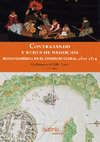
Contrabando y Redes de Negocios: Hispanoamerica en el Comercio Global, 1610-1814, 2024
Who were the merchants and political actors who donated to the Pious Fund of the Californias betw... more Who were the merchants and political actors who donated to the Pious Fund of the Californias between 1669 and 1701, and what motives and opportunities did they see in occupying the Californias? The literature assumes that evangelical piety was the sole motive for putting missions in the Californias, and certainly that was the inspiration of the austere Jesuits who lived close to hunger in the Peninsula. Behind the scenes we find actors such as Alonso Davalos y Bracamonte of Compostela (across from Baja California on the mainland and second wealthiest man in New Spain in the first decade of the 18th century) putting loyalists into the presidio staff, and that these loyalists controlled the boats in the Gulf of California, which was a backdoor from which untaxed silver could flow out of New Spain's silver mines. From Spain, Queen Mother Mariana of Austria was determined to prevent English pirates from using Baja California as a base for contraband trade. Similar to the private financing for Jesuit occupation of Las Marianas, donors through the Fondo Piadoso controlled by means of the Jesuits missions in Las Californias points on the route of the Manila galleon, and on contraband trade in silver and mercury between Sinaloa, Panama, and Peru.
¿Quiénes fueron los mercaderes y actores políticos que donaron a la Fondo Piadoso de las Californias entre 1669 y 1701, y qué motivos y oportunidades vieron en ocupar las Californias? La literatura asume que la piedad evangélica fue el único motivo para poner misiones en las Californias, y ciertamente esa fue la inspiración de los austeros jesuitas que vivieron cerca del hambre en la Península. Desde España, la reina madre Mariana de Austria estaba decidida a impedir que los piratas ingleses utilizaran Baja California como base para el comercio de contrabando. Entre donantes encontramos a actores como Alonso Dávalos y Bracamonte de Compostela (al otro lado de Baja California en tierra firme y segundo hombre más rico de Nueva España en la primera década del siglo XVIII) colocando a leales en el personal de los presidios, y que estos leales controlaban los barcos en el Golfo de California, que era una puerta trasera por la que podía salir plata en pasta de las minas de Nueva España. Parecido al financiamiento privado para la ocupación jesuita de Las Marianas, los donantes a través del Fondo Piadoso controlaban por medio de las misiones jesuitas en Las Californias puntos en la ruta del galeón de Manila, y en el comercio de contrabando de plata y mercurio entre Sinaloa, Panamá y Perú.
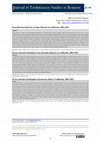
Journal of evolutionary studies in business, Jan 9, 2023
The Consulado de México was the mercantile guild that acted as commercial nerve-center of Spain's... more The Consulado de México was the mercantile guild that acted as commercial nerve-center of Spain's empire in the Americas. From 1801 to 1821, one of its members, Pedro González de Noriega, influenced California's economic growth by putting his nephew, José de la Guerra y Noriega, into the colony's military supply line. In 1801, for what purpose did De la Guerra y Noriega come to California? Whatever his intention, his life-plan changed in 1810, when insurgency broke out in New Spain, and military payroll ceased to arrive in California. Between 1811 and 1821, how did De la Guerra y Noriega adapt to this structural change by negotiating with international merchants from Manila to San Blas and Lima to supply California? As Spain's empire unraveled, we follow the microhistory of the Noriega mercantile network, as it reconfigured to the macroeconomic context of political transformation of the Pacific Rim in the
Journal of the West, 2023
NBER Working Paper No. 30251, 2022
We explore the long run impact of the Spanish missions on Native American outcomes in the early 2... more We explore the long run impact of the Spanish missions on Native American outcomes in the early 20th century. Native communities who interacted with Spanish missionaries developed into enclaves which blended Catholicism with native culture. Some survived assaults on their property rights by Mexico and the US to persist as reservations into the 20th century. We found that having extensive contact with missions increased the percentage of Native Americans Catholic, decreased crime rates, and increased income from agriculture and overall earnings from wages. Surprisingly, we found no impact on education.
Dollars & Sense, 2021
How Boeing workers are battling against perverse corporate incentives, and what their story tells... more How Boeing workers are battling against perverse corporate incentives, and what their story tells us about our financialized economy.
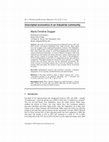
International Journal of Pluralism and Economics Education, 2019
One third of US manufacturing jobs disappeared between 2001 and 2009 and the conventional explana... more One third of US manufacturing jobs disappeared between 2001 and 2009 and the conventional explanations (low wages overseas, robots taking over) do not apply to the capital goods producers in Keene, New Hampshire, where the author teaches. Local firms compete with high wage counterparts and firms using robots hire people as well. De/reindustrialisation ascertains the cause(s) of industrial contraction-or success. Students visit plants in the local industrial base and conduct oral history interviews, analyse annual reports and apply specific concepts of economic theory. The course is interdisciplinary, involves undergraduate research and civic engagement and uses open education assignments. Unscripted learning has proved the great motivator, as students navigate their oral history interviews and the community presentation. The course succeeds in motivating students and it serves the community, conveys research skills and pushes the teacher to take economic theory in practical directions.
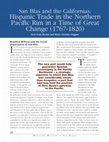
Mains'l Haul, 2018
In 1767, as part of a general renewal of colonial
government, economy, and defense, Inspector
Gen... more In 1767, as part of a general renewal of colonial
government, economy, and defense, Inspector
General José de Gálvez established a new naval
supply depot and shipyard at the relatively isolated
port of San Blas on the Pacific coast of what was then
the Spanish empire’s most prosperous possession – the viceroyalty of New Spain. The naval presence Gálvez established at San Blas was intended not simply as a supply base for the expanding northern frontier, but also a means of countering the stranglehold on Pacific
commerce currently enjoyed by the merchant guild of Mexico City through its port of Acapulco. San Blas transformed itself little by little from an outpost of the Spanish Royal Navy
into a commercial and international port--a process accelerated by the collapse of Spanish empire after 1810. Expanding commerce in the Spanish and later Mexican Pacific was made possible by changes in the system of colonial commerce due to English competition; to war;
to trade undertaken by neutrals; and finally by new
measures implemented that expanded the number of
people and places permitted to undertake trade within
the Americas, between the Americas and Asia, and
between Spain and the Americas and Asia. As
Guadalajara and San Blas grew in importance, Hispanic
merchants and their counterparts from New England
and Britain cemented their relationships with marriage
ties. Thus the initial Spanish plans to guarantee the
establishment of a maritime lifeline with the Californias
would ultimately evolve into a far broader system of trade
and communication that stretched from the ports of the
viceroyalties of Peru and New Spain to the Californias
and beyond to the emporia of Asia.
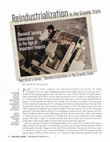
Dollars & Sense, 2018
Federal Reserve Chair Paul
Volcker, appointed by President Carter, pushed the dollar’s value back... more Federal Reserve Chair Paul
Volcker, appointed by President Carter, pushed the dollar’s value back up from 1979 to 1982. This policy
opened up a 30% price difference between U.S. and Japanese machine tools by 1984. Machine tool firms
filled with skilled machinists started collapsing up and down the Connecticut River Valley. Yet why didn’t a single U.S. machine tool firm make some tool that was so innovative that even a
strong dollar could not deter global customers? Had Americans lost their ingenuity?
Just such a spectacular invention was developed in Keene, N.H., and it came to market in 1981 and was
highly successful. The developer was Don Brehm, the tool was the Diamond Turning Machine (DTM),
and the people who made it happen were the staff of Pneumo Precision. The reason we don’t know about
it is because the structure of U.S. finance forced Brehm to sell the firm by 1984. He founded precision
startups again in 1988 and 2004. Each time, U.S. financial or legal institutions hindered his path. He retired at 72, but ultra-precision DTMs are still manufactured in Keene by two head-to-head competitors: the independent company Moore Nanotechnology, and corporate behemoth Ametek Precitech.
Dollars&Sense, 2018
I tell the story of Miniature Precision Bearings (MPB), a firm whose competitors lie in high-wage... more I tell the story of Miniature Precision Bearings (MPB), a firm whose competitors lie in high-wage nations such as Denmark, Sweden, Germany, and Japan. If MPB is indicative, the debt-fueled rise of the stock market between the eighties and the year 2000 put the firm into the hands of owners who used the profits to manipulate share price, while sidelining local managers whose focus had been product quality and worker skill. When the asset values of company shares became managers’ priority, workers lost the one asset that meant the most to them: secure jobs that produced a stream of income for twenty years with benefits that made savings unnecessary.Some jobs remain but, without security and benefits, the same positions are a ticket to debt and stress. The shareholder-value revolution turns out to be the economic backstory to the unraveling of rural America.
From La Florida to La California: Adaptation, Negotiation, and Resistance, 2017
A website for California teachers notes that mission Indians were slaves, citing Lorenzo Asisara'... more A website for California teachers notes that mission Indians were slaves, citing Lorenzo Asisara's story as evidence. Asisara's story of his father's whipping at a mission does call to mind the humiliation of slavery. Yet whatever mission Indians were, they were not slaves--if only because Indians were not property and African slaves were. The Spanish manipulated Indians through their tie to the land, as opposed to Africans, who were uprooted from their lands in the process of slavery. This essay examines 1769 to 1810 to identify key characteristics of mission Indian status.
Keene’s capital goods producers do not compete with producers in low-wage nations, but rather wit... more Keene’s capital goods producers do not compete with producers in low-wage nations, but rather with firms in Europe and Japan, and unit labor costs have generally been higher in those places than in the United States since 1990. The decline in U.S. jobs has less to do with external forces than Americans seem to think, and more to do with the policies taken (or not taken) inside the United States. A case study of Kingsbury Machine Tool Corporation from 1980 to 2012 explains how.
Robert Senkewicz (editor). Many and Brilliant Lights: Treasures from the Santa Barbara Mission-Archive Library, 2017
Summarizes contents of 1793-1805 Mission-Presidio account book at Santa Barbara.

Conventional wisdom has it that, in the eighteenth century, California’s mission Indians labored ... more Conventional wisdom has it that, in the eighteenth century, California’s mission Indians labored without recompense to support the Spanish military and other costs of imperial administration. This article challenges this conventional wisdom, arguing that it was not
until the Spanish empire unraveled in the nineteenth century that Indians labored at missions with little compensation. Spain stopped subsidizing California in 1810, at which point the systematic non-payment of Christian Indians for goods supplied to the California military was implemented as an emergency measure. In 1825, independent
Mexico finally sent a new governor to California, but military payroll was never reinstated in its entirety. Not surprisingly, most accounts of military confrontation between California Indians and combined mission/military forces date from the 1810 to 1824 period. By investigating an underutilized source—account books of exports and imports for four missions—the article explores two issues: first, the processes of cooptation inside missions up to 1809, and secondly, the way that Spain’s cessation of financing in 1810 affected the relationship with Indians.
Review of Radical Political Economics, 2013
ABSTRACT
Encyclopedia of Global Human Migration, edited by Emmanuel Ness, Feb 4, 2013






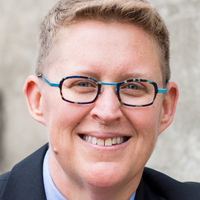




Uploads
Papers by Marie Christine Duggan
in both the early 17th century (when Sebastian Vizcaino explored California) and in late 18th century (when the decision was made to settle Monterey). What connects Japan and California is the sea route. In the 17th century, Manila to Acapulco was a six month voyage, but Japan to California was only thirty days. We revisit the biography of historian Michael Mathes to consider Vizcaino as a China trade merchant who mapped both southern Japan and California, while we also consider the mid-18th century writing of Pedro Calderon Henriquez from Manila in which he lobbied for a mission in Hokkaido, Japan and a shipyard in Monterey, California.
¿Quiénes fueron los mercaderes y actores políticos que donaron a la Fondo Piadoso de las Californias entre 1669 y 1701, y qué motivos y oportunidades vieron en ocupar las Californias? La literatura asume que la piedad evangélica fue el único motivo para poner misiones en las Californias, y ciertamente esa fue la inspiración de los austeros jesuitas que vivieron cerca del hambre en la Península. Desde España, la reina madre Mariana de Austria estaba decidida a impedir que los piratas ingleses utilizaran Baja California como base para el comercio de contrabando. Entre donantes encontramos a actores como Alonso Dávalos y Bracamonte de Compostela (al otro lado de Baja California en tierra firme y segundo hombre más rico de Nueva España en la primera década del siglo XVIII) colocando a leales en el personal de los presidios, y que estos leales controlaban los barcos en el Golfo de California, que era una puerta trasera por la que podía salir plata en pasta de las minas de Nueva España. Parecido al financiamiento privado para la ocupación jesuita de Las Marianas, los donantes a través del Fondo Piadoso controlaban por medio de las misiones jesuitas en Las Californias puntos en la ruta del galeón de Manila, y en el comercio de contrabando de plata y mercurio entre Sinaloa, Panamá y Perú.
government, economy, and defense, Inspector
General José de Gálvez established a new naval
supply depot and shipyard at the relatively isolated
port of San Blas on the Pacific coast of what was then
the Spanish empire’s most prosperous possession – the viceroyalty of New Spain. The naval presence Gálvez established at San Blas was intended not simply as a supply base for the expanding northern frontier, but also a means of countering the stranglehold on Pacific
commerce currently enjoyed by the merchant guild of Mexico City through its port of Acapulco. San Blas transformed itself little by little from an outpost of the Spanish Royal Navy
into a commercial and international port--a process accelerated by the collapse of Spanish empire after 1810. Expanding commerce in the Spanish and later Mexican Pacific was made possible by changes in the system of colonial commerce due to English competition; to war;
to trade undertaken by neutrals; and finally by new
measures implemented that expanded the number of
people and places permitted to undertake trade within
the Americas, between the Americas and Asia, and
between Spain and the Americas and Asia. As
Guadalajara and San Blas grew in importance, Hispanic
merchants and their counterparts from New England
and Britain cemented their relationships with marriage
ties. Thus the initial Spanish plans to guarantee the
establishment of a maritime lifeline with the Californias
would ultimately evolve into a far broader system of trade
and communication that stretched from the ports of the
viceroyalties of Peru and New Spain to the Californias
and beyond to the emporia of Asia.
Volcker, appointed by President Carter, pushed the dollar’s value back up from 1979 to 1982. This policy
opened up a 30% price difference between U.S. and Japanese machine tools by 1984. Machine tool firms
filled with skilled machinists started collapsing up and down the Connecticut River Valley. Yet why didn’t a single U.S. machine tool firm make some tool that was so innovative that even a
strong dollar could not deter global customers? Had Americans lost their ingenuity?
Just such a spectacular invention was developed in Keene, N.H., and it came to market in 1981 and was
highly successful. The developer was Don Brehm, the tool was the Diamond Turning Machine (DTM),
and the people who made it happen were the staff of Pneumo Precision. The reason we don’t know about
it is because the structure of U.S. finance forced Brehm to sell the firm by 1984. He founded precision
startups again in 1988 and 2004. Each time, U.S. financial or legal institutions hindered his path. He retired at 72, but ultra-precision DTMs are still manufactured in Keene by two head-to-head competitors: the independent company Moore Nanotechnology, and corporate behemoth Ametek Precitech.
until the Spanish empire unraveled in the nineteenth century that Indians labored at missions with little compensation. Spain stopped subsidizing California in 1810, at which point the systematic non-payment of Christian Indians for goods supplied to the California military was implemented as an emergency measure. In 1825, independent
Mexico finally sent a new governor to California, but military payroll was never reinstated in its entirety. Not surprisingly, most accounts of military confrontation between California Indians and combined mission/military forces date from the 1810 to 1824 period. By investigating an underutilized source—account books of exports and imports for four missions—the article explores two issues: first, the processes of cooptation inside missions up to 1809, and secondly, the way that Spain’s cessation of financing in 1810 affected the relationship with Indians.
in both the early 17th century (when Sebastian Vizcaino explored California) and in late 18th century (when the decision was made to settle Monterey). What connects Japan and California is the sea route. In the 17th century, Manila to Acapulco was a six month voyage, but Japan to California was only thirty days. We revisit the biography of historian Michael Mathes to consider Vizcaino as a China trade merchant who mapped both southern Japan and California, while we also consider the mid-18th century writing of Pedro Calderon Henriquez from Manila in which he lobbied for a mission in Hokkaido, Japan and a shipyard in Monterey, California.
¿Quiénes fueron los mercaderes y actores políticos que donaron a la Fondo Piadoso de las Californias entre 1669 y 1701, y qué motivos y oportunidades vieron en ocupar las Californias? La literatura asume que la piedad evangélica fue el único motivo para poner misiones en las Californias, y ciertamente esa fue la inspiración de los austeros jesuitas que vivieron cerca del hambre en la Península. Desde España, la reina madre Mariana de Austria estaba decidida a impedir que los piratas ingleses utilizaran Baja California como base para el comercio de contrabando. Entre donantes encontramos a actores como Alonso Dávalos y Bracamonte de Compostela (al otro lado de Baja California en tierra firme y segundo hombre más rico de Nueva España en la primera década del siglo XVIII) colocando a leales en el personal de los presidios, y que estos leales controlaban los barcos en el Golfo de California, que era una puerta trasera por la que podía salir plata en pasta de las minas de Nueva España. Parecido al financiamiento privado para la ocupación jesuita de Las Marianas, los donantes a través del Fondo Piadoso controlaban por medio de las misiones jesuitas en Las Californias puntos en la ruta del galeón de Manila, y en el comercio de contrabando de plata y mercurio entre Sinaloa, Panamá y Perú.
government, economy, and defense, Inspector
General José de Gálvez established a new naval
supply depot and shipyard at the relatively isolated
port of San Blas on the Pacific coast of what was then
the Spanish empire’s most prosperous possession – the viceroyalty of New Spain. The naval presence Gálvez established at San Blas was intended not simply as a supply base for the expanding northern frontier, but also a means of countering the stranglehold on Pacific
commerce currently enjoyed by the merchant guild of Mexico City through its port of Acapulco. San Blas transformed itself little by little from an outpost of the Spanish Royal Navy
into a commercial and international port--a process accelerated by the collapse of Spanish empire after 1810. Expanding commerce in the Spanish and later Mexican Pacific was made possible by changes in the system of colonial commerce due to English competition; to war;
to trade undertaken by neutrals; and finally by new
measures implemented that expanded the number of
people and places permitted to undertake trade within
the Americas, between the Americas and Asia, and
between Spain and the Americas and Asia. As
Guadalajara and San Blas grew in importance, Hispanic
merchants and their counterparts from New England
and Britain cemented their relationships with marriage
ties. Thus the initial Spanish plans to guarantee the
establishment of a maritime lifeline with the Californias
would ultimately evolve into a far broader system of trade
and communication that stretched from the ports of the
viceroyalties of Peru and New Spain to the Californias
and beyond to the emporia of Asia.
Volcker, appointed by President Carter, pushed the dollar’s value back up from 1979 to 1982. This policy
opened up a 30% price difference between U.S. and Japanese machine tools by 1984. Machine tool firms
filled with skilled machinists started collapsing up and down the Connecticut River Valley. Yet why didn’t a single U.S. machine tool firm make some tool that was so innovative that even a
strong dollar could not deter global customers? Had Americans lost their ingenuity?
Just such a spectacular invention was developed in Keene, N.H., and it came to market in 1981 and was
highly successful. The developer was Don Brehm, the tool was the Diamond Turning Machine (DTM),
and the people who made it happen were the staff of Pneumo Precision. The reason we don’t know about
it is because the structure of U.S. finance forced Brehm to sell the firm by 1984. He founded precision
startups again in 1988 and 2004. Each time, U.S. financial or legal institutions hindered his path. He retired at 72, but ultra-precision DTMs are still manufactured in Keene by two head-to-head competitors: the independent company Moore Nanotechnology, and corporate behemoth Ametek Precitech.
until the Spanish empire unraveled in the nineteenth century that Indians labored at missions with little compensation. Spain stopped subsidizing California in 1810, at which point the systematic non-payment of Christian Indians for goods supplied to the California military was implemented as an emergency measure. In 1825, independent
Mexico finally sent a new governor to California, but military payroll was never reinstated in its entirety. Not surprisingly, most accounts of military confrontation between California Indians and combined mission/military forces date from the 1810 to 1824 period. By investigating an underutilized source—account books of exports and imports for four missions—the article explores two issues: first, the processes of cooptation inside missions up to 1809, and secondly, the way that Spain’s cessation of financing in 1810 affected the relationship with Indians.